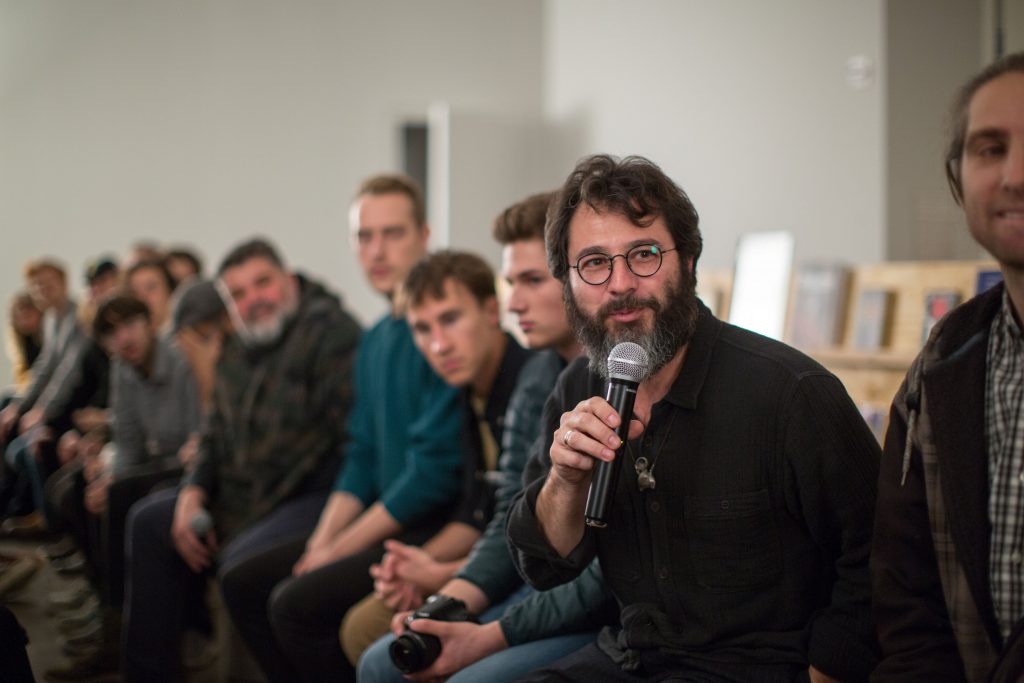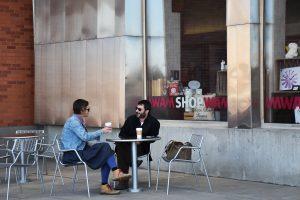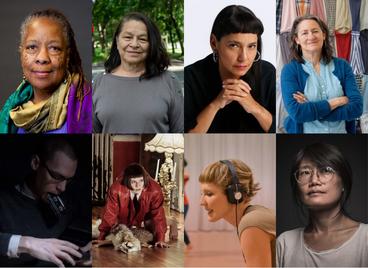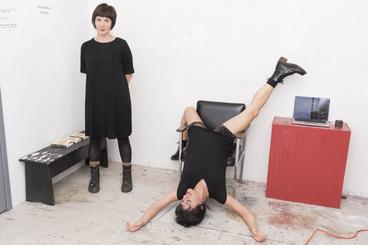WAM’s Cindy and Jay Ihlenfeld Curator for Creative Collaboration, Boris Oicherman, reflects on the past year’s progression in working towards fulfilling the Target Studio for Creative Collaboration’s mission, as well as what the future of the studio has in store.
Kate Drakulic: You began planning for this year’s studio cohort in the summer of 2017. At the time, what were your initial intentions for the Target Studio for Creative Collaboration?
Boris Oicherman: The vision for the Target Studio, in my mind, was of a platform that supports artists in participating in knowledge that’s created in the University—artists having access to the intellectual resources of the University by working with scholars, and vice versa. It’s making the two worlds accessible to each other. The question was, “How do I turn a museum space into a platform for this kind of process?” That’s not a small question.
I was new to town, and I knew I had to start somewhere practical. Where could I start? So I started to meet people, more than 300 people, most during the first year. In each meeting I learned about people’s work, and posed the same proposal to all: use the Target Studio to expand your work by collaborating with others. What I have accomplished by having this really intense schedule of meetings was a mental map of the field; what artists are interested in, how artists respond to my proposal, what scholars are interested in and how they react to the same proposal, and finally, what connections can be made between the two groups.
We’re talking about something like an artist residency, but it’s not your typical artist residency. I’m not providing a studio and an exhibition. What I’m providing is a platform to engage with a different kind of knowledge that usually remains inaccessible. When I get the question, “How did you choose artists for this program?,” I respond that it’s in fact the other way around. Artists chose me. What started to appear is that there is a very specific kind of artists who choose this kind of work.
KD: Did you stick to those intentions, and do you feel that you accomplished the goal of using the Target Studio as a platform to connect scholars and artists?
BO: I feel we have started moving there. When you say “accomplished,” it doesn’t capture that it’s an ongoing and constantly developing process. The term I like to use is “emerge.” Emergence is when very complex things arise out of many simple interactions. Most social processes emerge, as opposed to planned and executed. I like to think about curating as practice of emergence. Two years ago I saw my task as curating a platform, but now I have another metaphor I like, “a junction.” I have learned this idea from the curator Hans Ulrich Obrist, who talks about curating as making junctions where cultures and knowledges meet, where nothing has to happen but anything can happen.
This process, from what I see from the limited experience of just one year, is starting to work to a good degree. I do see the Target Studio becoming a junction where different practices touch each other. To that degree, this model is working. Obviously, to “accomplish” something, it’s going to take a bit more than one season!
KD: What is the impact of the Target Studio artists cohort within the context of the museum, the university, and the community?
BO: Again, one year is too short a time to consider the impact, but some signs of potential impact are there already, on every scale, from individual artists, to the museum, to the university, to the broader artist community in town. For individual artists, in my mind, it gives them the opportunity to develop things on a scale that’s much bigger than what artists can approach by working on their own. They can start addressing more ambitious agendas when they have access to University resources, to knowledge, to scholarship––and to a space in a major museum as their laboratory.
For the museum, it challenges the traditional, hierarchical model where the museum decides what art is valuable and what gets into the museum. It challenges that model by creating process where artists are part of the decision making about what the museum supports and what it can do. All the projects and initiatives of the Target Studio, with the exception of one, are artist led and initiated. I have never published a call for proposals for a specific subject, it was a process where artists proposed initiatives to me and collaboratively we figured out how to make them possible.
A very similar [to the museum] hierarchy of knowledge exists in the University. When a university says, “this knowledge is valuable because I decide it so,” all the other forms of knowledge and ways of knowing become less valued. How do you break that pattern and bring different kinds of knowing into the University? I believe you do that by actively involving artists in the University research and teaching––each artist will bring in knowledge of a very different kind.
And, it is the same for artist communities, but in reverse. Artist communities start interfacing with different kinds of knowledge that they otherwise don’t have access to. So, it’s democratizing and diversifying knowledge on both ends of collaboration.
KD: What’s next? Based on this past year, what does the future of the Target Studio look like?
BO: Ah, the future. Let’s just focus on the coming year—otherwise this interview will get infinite! There are many parts and many layers. My goal from the beginning was not to do projects, but to establish relationships that can continue for as long as possible. Several initiatives that started this year are actually continuing.
For example, Daniel McCarthy Clifford was this fall’s fellow [2018]. He has established a collaborative involving many researchers, where they think together how the University can address the negative ripple effects of mass incarceration on families and communities. This collaborative was recently funded by the Institute for Advanced Study, so Danny is continuing to work next year with the people he’s established relationships with. So, in part the future program of the Target Studio consists of continued relationships.
Another layer is the structure of the program itself. This year was the first experiment in using a museum space as a platform for collaboration. We have learned a lot, and that knowledge will inform the way we approach next year. For example, there was a certain event structure that will change, because it was not always productive. Another aspect is the evolving way of how new initiatives are starting. As the Target Studio becomes more known, more people approach me with ideas, and so we need to develop a way of organizing and supporting them effectively.
One of the most significant initiatives this year is the collaboration between WAM and the University of Minnesota Medical School, where four artists are fellows at both institutions for a year. In the coming fall [2019], the four initiatives will culminate with a series of events, happenings and exhibitions at WAM. All projects will be present in the museum, but taking very different forms. There’s a poet, Yuko Taniguchi, who’s working with a psychiatrist Katie Cullen; a social practice artist, Peng Wu, working with a sleep researcher Mike Howell; a dancer, Anna Marie Shogren, who’s working with Kris Talley at the nursing school; and a sculptor, Alison Hiltner, working with Brenda Ogle at the System Regeneration Lab and Paul Iaizzo at the Visible Heart Laboratory. It’s all extremely diverse. In the fall, we will have the first experiment in how to create a semester long event about such a complex initiative. How will we organize them together in the same space? It’s a challenge, and we work on this challenge together with the artists. I also would like to thank the Dean of the Medical School, Dr. Jakub Tolar, for supporting this unique project.
There will be an international project, a collaboration with the Russian curator collective TOK, that involves a group of local artists working with U of M students across disciplines on developing a play, followed by an international symposium in the spring. Another international collaboration that’s developing is with SymbioticA, a unique artist-ran, bio-art research laboratory at the University of Western Australia in Perth. We would like to develop a residency exchange with them.
Lots of things are continuing and maturing, and the philosophy of running the space is evolving too. This is the most important element for the Target Studio, the change: it’s always dynamic, and it’s always responsive, and forever evolving.



